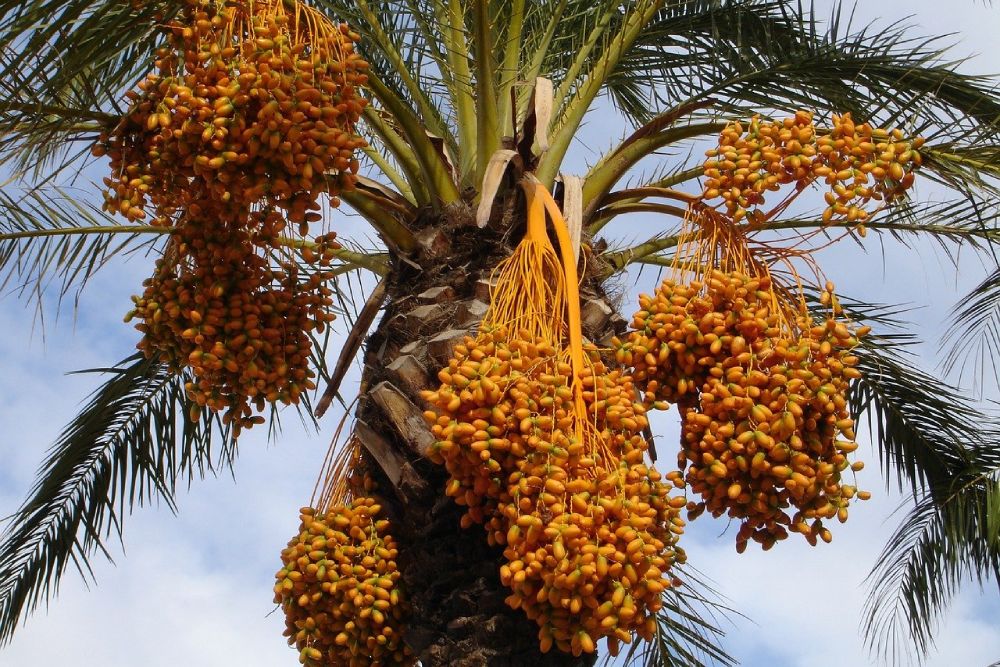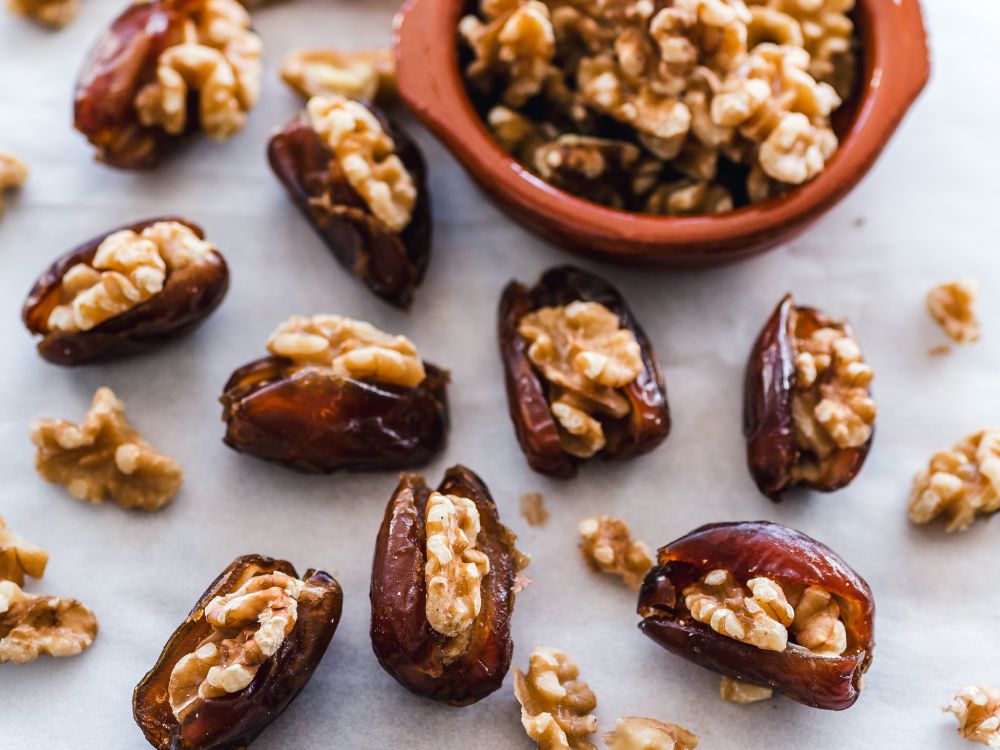You can only consider a Middle Eastern trip complete with relishing the delicious dates from the Arabian Peninsula at least once. Dates are available in various Emirates, such as the UAE, Qatar, Saudi Arabia, and others. Dates are immensely popular and form an integral part of the Arabian culture. They are usually served to guests with coffee or as sweet delicacies filled with dried fruit or orange peel. You can easily find them in souqs, supermarkets, and luxury food boutiques. They also make for a perfect souvenir to take back home.
Table of Contents
The importance of dates in the Middle East
The date palm is a highly valued fruit in the Middle East. In fact, it played a significant role in the area’s economy before the discovery of oil. Each year, the date palm produces a considerable amount of fruit. Even after the tree has finished producing fruit, nothing goes to waste as all parts are reused.
Date palm trunks are repurposed as poles for tents, while the leaves become tent roofs, floors, and traditional handicrafts such as baskets and mats. Additionally, you can get sweet syrup from the trunk, and a type of coffee and kajal for eye makeup from its seeds.
To learn more about Emirati traditions concerning dates, one can attend the Liwa Date Festival, a significant event every July in the Liwa Oasis in the Emirate of Abu Dhabi.
Dates are also a crucial traditional crop in countries that historically had substantial trade in the Arabian Peninsula, such as Iraq and North Africa West of Morocco. Furthermore, dates, when consumed with milk, are the first meal during Ramadan after sunset. This tradition illustrates the fruit’s importance in the Arab world.
Unsurprisingly, the date palm is Muhammad’s favourite fruit. The Koran often mentions them as ‘God’s gift.’ The date palm is indeed a precious resource for those who cultivate it. Each tree produces an average of 70-140 kilograms of dates per year. Additionally, since dates ripen at different times, they offer multiple harvests throughout the year.

The different types of dates in the Arabian Peninsula
Several types of date palms grow in the Arabian Peninsula, many cultivated for the food trade in the Arab Emirates or imported from Saudi Arabia. After seeing at least a dozen dates displayed in Doha and Dubai’s shops and souqs with different colours and shapes, I tried searching online for how many different types existed. With each listing, however, I discovered new dates, from Ammari to Trounja!
The most popular date varieties in the Arabic Peninsula are Ajwa, Khidri, Kholas, Medjool, Segai, Sokari, and Wanam. B. Below, you can learn about their differences and special features.
Ajwa
The Ajwa date is originally from Saudi Arabia, from the ‘holy city’ of Medina, and it is cultivated in limited quantities. As for quality, the Ajwa date tends to be of the dry variety, is black in colour and has very fine wrinkled lines. Its taste is soft and slightly sweet, with an aromatic flavour.
Deglet Nour
The Deglet Nour date is the classic date you can find in Europe at Christmas time. Often grown for export, you can also find them in all supermarkets in the Middle East.
Khidri
One of the most renowned dates is the Khidri, which is cylindrical and elongated in shape. Native to Egypt, it varies in colour from amber to dark brown and has wrinkled, scaly skin. The flavour of the Khidri date is very sweet, similar to sultanas, but with a caramel aftertaste. At the same time, it is soft and chewy on the palate.
Kholas
Compared to other date types, the Kholas quality is appreciated at every stage of ripeness, from unripe to fully ripe. The shape of Kholas dates is oval, with a semi-transparent skin ranging from dark brown to golden brown. This date is often served with classic Arabic coffee because of its rich, caramel-like flesh.
Medjool
The Medjool is rightly one of the most popular date varieties in the world. Large, soft, and with a sweet, caramel-like flavour, they are among the most popular dates in the West. Medjool dates have thick skin, are dark brown in colour and have a large, elongated shape.
Segai
Segai dates originate from Saudi Arabia and have a unique appearance because the colour varies from a light beige edge to shades of yellow and dark orange on the body. The colour of this date also reflects the taste, with the edge firm and crisp, while the centre is softer and sweeter.
Sokari
The Sokari date, also known as the ‘royal date,’ can be found in both soft and hard varieties. Its taste is very sweet, and in fact, the name has the same root as the word ‘sugar’ in Arabic. Sokari dates are cone-shaped and yellow to dark gold in colour. In their harder variety, the taste is crispy and caramel-like, just like hardened sugar.
Wanan
Wanan dates are less common but considered very delicious in the Arabian Peninsula. The shape of the Wanan date is cone-shaped, while the skin is dark and wrinkled, resulting in a very sweet taste. They are used to prepare Bateel sweets, a luxury brand of dates.

Now that you know all about the different types of dates loved in the Arabian Peninsula, you just have to taste the various qualities in the souqs of Dubai, Abu Dhabi, Muscat or Doha to discover your favourites. In the meantime, share in the comments if you already know the existence of all these different types of dates and which ones you have already tasted!
